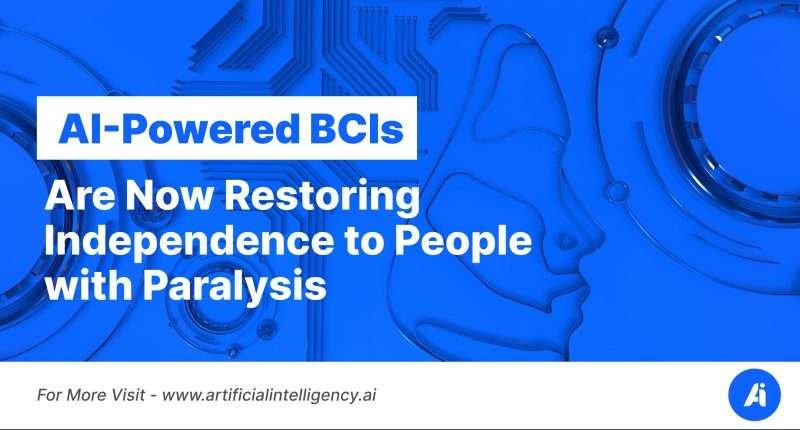Consider being able to control a robotic arm just by thinking about it. Sounds like science fiction, right? Well, thanks to a groundbreaking breakthrough at UC San Francisco, it’s now a reality.
Researchers have created an advanced brain-computer interface (BCI) that allows individuals with paralysis to manipulate robotic devices using only their thoughts. And the best part? Unlike previous BCIs, this one keeps working for months without needing constant recalibration.
What Makes This BCI Different?
BCIs aren’t new, but they’ve had a major flaw—most stop functioning properly after just a day or two. This new system? It’s been working for seven months straight with no major adjustments.
So, what changed?
The secret lies in artificial intelligence (AI). By combining AI with neuroscience, researchers developed a system that adapts to subtle changes in brain activity over time. Instead of requiring the user to start from scratch every day, the AI continuously learns and refines its understanding of their neural signals.
The result? More precise control of robotic devices and a truly life-changing experience for those with severe motor impairments.
How Does It Work?
Here’s the fascinating part—our brain’s activity patterns shift slightly every day, even when we’re thinking about the same movement. That’s why traditional BCIs struggle to stay accurate. Dr. Karunesh Ganguly and his team at UCSF tackled this challenge head-on by studying a participant who had been paralyzed for years due to a stroke.
- Training the AI – Sensors implanted on the participant’s brain recorded neural signals as he imagined movements like grasping and lifting objects. Over two weeks, the AI learned to recognize and adjust to daily shifts in these signals.
- Virtual Practice – Before controlling a real robotic arm, the participant is first trained in a virtual one. This feedback loop helped refine his ability to think about movements more precisely.
- Real-World Success – Once he transitioned to using a physical robotic arm, he quickly mastered tasks like picking up blocks, opening cabinets, and even holding a cup under a water dispenser—all using only his thoughts.
Months later, he was still able to control the robotic arm with minimal recalibration, proving that this BCI could offer long-term reliability.
Why Does This Matter?
For people with paralysis, simple tasks like feeding themselves or getting a drink of water can be impossible without assistance. This technology could change that. Imagine regaining the ability to do everyday activities independently. That’s a game-changer.
Dr. Ganguly believes that refining the AI even further could lead to even smoother and faster movements. The next step? Testing the system in real home environments to see how it performs outside the lab.
What’s Next for BCIs?
So, where do we go from here? The success of this adaptive AI-powered BCI opens the door for even bigger advancements. Some key areas to focus on include:
- Speed & Precision – How can we make movements feel more natural and fluid?
- Wider Accessibility – How do we make this technology available to more people?
- Integration with Everyday Tech – Could this BCI eventually control a smartphone, a wheelchair, or even smart home devices?
The Bottom Line
This breakthrough at UCSF marks an exciting new era for neuroprosthetics. AI-powered BCIs could soon restore independence to millions of people with paralysis, giving them control over their world in ways once thought impossible.
What do you think the future holds for this technology? What’s the next step in making BCIs a practical solution for everyday life?





